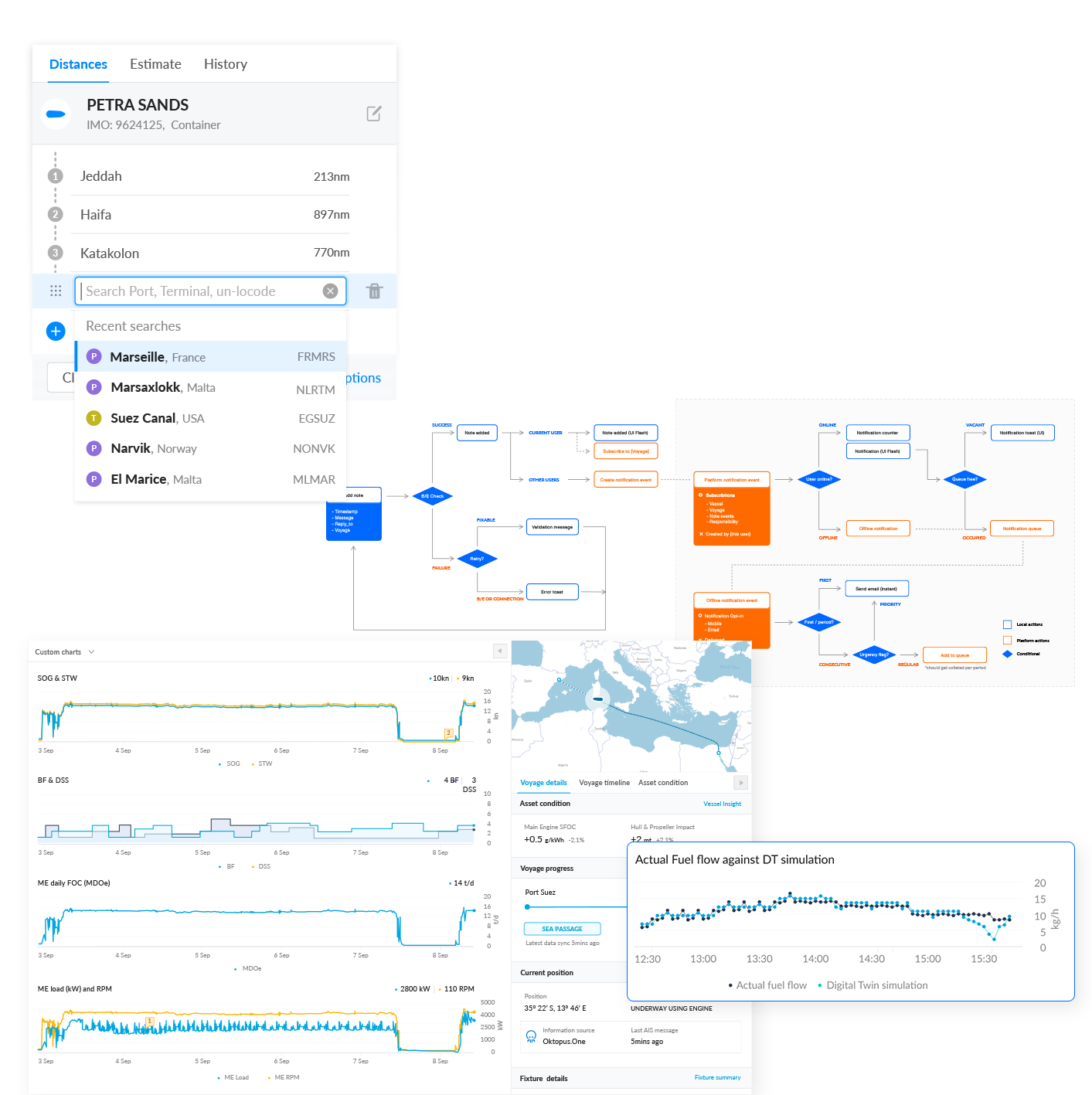UX Case Study
We changed users' behaviours to transform cargo shipping for a greener future
OpenOcean Studio
For the last three years, I have been helping transform the cargo shipping industry to a new reality of lower emissions and environmental consciousness.
🔒 Opinions presented in this case study are my own and may not express the views of 90POE. Any potentially confidential information was omitted or made unintelligible to comply with NDA.
The challange
Around 90% of all internationally traded goods - our clothes, food, gas, cars, production parts and commodities - are transported to us by cargo ships. With a single vessel's emissions being comparable to entire years worth of traffic going through central London, the impact on the environment is substantial when you're dealing with a fleet of 150+ vessels.
My role
By uncovering needs and understanding workflows, I helped the Head of Product map impact areas and create a strategic product vision. I established design principles, mentored designers and built a design system to support agile delivery.
To better prepare customers for increasing emission restrictions, I designed and validated 12+ applications centred around user needs in commercial engagements, planning, execution and analysis of vessel performance data.
Success
We helped customers improve ways they optimise passage plans, reduce fuel consumption and avoid accidents. Products I've designed delivered measured value and became a business-critical part of the OpenOcean SaaS platform.
It wasn't always smooth sailing to success, as there was an unavoidable obstacle...
Complete case study available upon request
Unfortunately, not everything can be shared in public. I will walk you through the constraints and politics around this project and share some details:
- constraints: how and why we navigated around limited users access
- my process: from opportunity, empathy and problem statement to testing, measuring and optimising UI
- how we used Current, Next and Future designs throughout the management of change
- how we stayed responsive to user feedback, increasing product-market fit
- how we collaborated on this project with multiple teams across the organisation
- how we envisaged and executed consecutive steps in digital transformation, changing user approach from reactive to predictive
- and how we measured delivered value and environmental impact
Send me an email or message on LinkedIn

